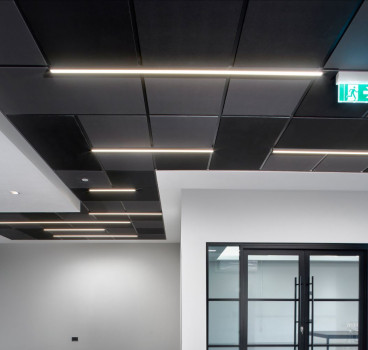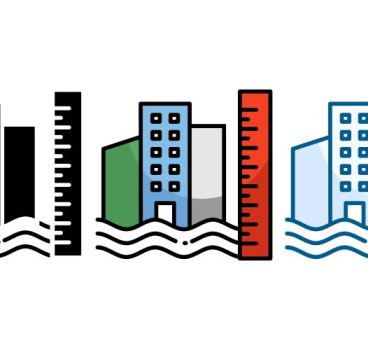The future of green building regulations - innovations and challenges ahead
The construction industry is not known for its sustainability. However, with rising concerns about climate change and its contribution to global warming, the sector has adopted and revised several green building regulations. These innovations are not without their challenges, though, and building professionals must consider the opportunities and difficulties that lie ahead.
The International Energy Agency says buildings account for 30% of global energy use and 26% of energy-related emissions. Eighteen percent of indirect emissions derive from electricity and heating.
In addition to high energy consumption, the building sector contributes to resource depletion and materials waste, resulting in overflowing landfills. According to one study, construction waste management is a problem for 95.71% of projects, while 75.71% of construction companies fail to assign professional oversight of waste streams.
These issues have inspired green building regulations and evolving practices to reduce the environmental impact before, during and after construction. As a result, the industry can lower its carbon footprint, conserve essential natural resources and decrease waste. These are five leading green building standards you should know.
Leadership in Energy and Environmental Design (LEED)
LEED is the world’s most renowned certification for all types of green building design. It provides a framework for energy-efficient, cost-saving and healthy structures across 186 nations and territories. So far, the U.S. Green Building Council has certified about 197,000 LEED projects globally, setting the standard for new construction, retrofits, and building operations and maintenance.
Energy Star
Energy Star is a U.S. Environmental Protection Agency certification program for buildings and products that meet stringent standards for energy efficiency. About 40% of Fortune 500 businesses partner with this government-backed initiative to deliver energy- and cost-saving solutions to American organizations and households.
Since its establishment in 1992, Energy Star has saved 5 trillion kilowatt-hours of electricity and reduced greenhouse gas emissions by 4 billion metric tons. Whether it is reducing energy consumption through LED bulbs or low-energy refrigerators and washers, Energy Star helps consumers make informed buying decisions. You will even find guides to purchasing energy-efficient windows with low-E glass coatings to block infrared light for indoor air consistency and double-pane insulation.
Passive House
The Passive House Institute has rigorous, performance-based expectations for buildings to attain Passive House certification. You must reduce energy consumption through excellent insulation and airtight construction, utilizing heat recovery ventilation and superior quality windows for optimal thermal comfort.
Passive solar helps you achieve a passive building by absorbing, storing and distributing heat throughout the structure. Glass windows must face 30 degrees of true south with exposed surfaces available to soak up the heat.
Building Research Establishment Environmental Assessment Methodology (BREEAM)
BREEAM is a third-party international certifying body for sustainable buildings, infrastructure and communities. It analyzes the whole life of construction projects across various categories, including energy, health, water, resilience and innovation. Your building must achieve 85% or 70% to receive an outstanding or excellent performance rating, respectively.
WELL Building Standard
The WELL Building Standard is another performance-based system measuring occupancy health and well-being within buildings. This certification focuses on 10 categories, including air and water quality, light, comfort, fitness and cognitive health. The WELL Building Institute and the U.S. Green Building Council have partnered to deliver a streamlined dual certification in WELL version 2 and LEED version 4.1.
Innovations in Green Building Regulations
The National Building Performance Standards Coalition was a pivotal movement established by the White House in 2022. The group comprises state and local governments committed to green design and the advancement of legislation requiring existing buildings to meet minimum energy and climate performance benchmarks. Shifting to performance-based standards has delivered greater flexibility and encouragement to achieve sustainability.
Adopting the Internet of Things, artificial intelligence and data analytics has also improved building operations. Experts are exploring new regulations around smart grids, energy monitoring and automation to ensure efficiency, grid stability and the protection of user interests.
Implementing regulations around construction waste also promotes a circular economy. Some initiatives include material recycling, reusable content, and disassembly-driven design. Likewise, using low-carbon materials — like recycled concrete and mass timber — helps drive down embodied carbon emissions.
Challenges and Solutions for Construction Professionals
Costs, inadequate training and supply chain complexities pose increasing challenges for construction professionals. However, there are ways to navigate these issues effectively.
For instance, while green building regulations raise upfront costs on materials and appliances, conducting life cycle cost analyses and leveraging government incentives will help lower expenses. Under the Inflation Reduction Act, you can pursue a 30% federal tax credit for household energy efficiency upgrades through 2032. Tax credits are also available for businesses.
Providing training and certification programs and exchanging knowledge about green building practices will also close the skills gap during the transition to sustainable construction. Meanwhile, sourcing materials locally, demanding materials innovation and promoting transparency will bolster a greener supply chain.
Meeting each challenge with a solution will spearhead net-zero building design and operations, creating a healthier and more resilient built environment.
Embracing Green Building and Innovation for a Healthier Planet
You must remain informed about evolving green building practices and regulations as the construction industry progresses toward sustainability. While the outcome of these changes is greener on the other side, you must overcome several challenges along the way. Embrace innovation as the building sector transforms, and continue learning about the complexities and opportunities within construction for a healthier planet.
Additional Blogs

When fire breaks out who really knows the system
The story that caught my attention recently wasn’t about fire growth or building loss, it was about confusion. Specifically, the confusion faced by the fire service when arriving at buildings...
Read moreThe design and development of Nexus Layouts
When Zentia set out to rethink the suspended ceiling, the brief was clear: deliver greater creative freedom for designers, more distinctive visual identity for clients, and a solution that could keep...
Read more

The 100-year construction project or why longevity Is the new sustainability
For decades, the construction sector has defined sustainability through metrics such as operational energy, embodied carbon, material efficiency and circularity. These measures remain vital, but a...
Read more